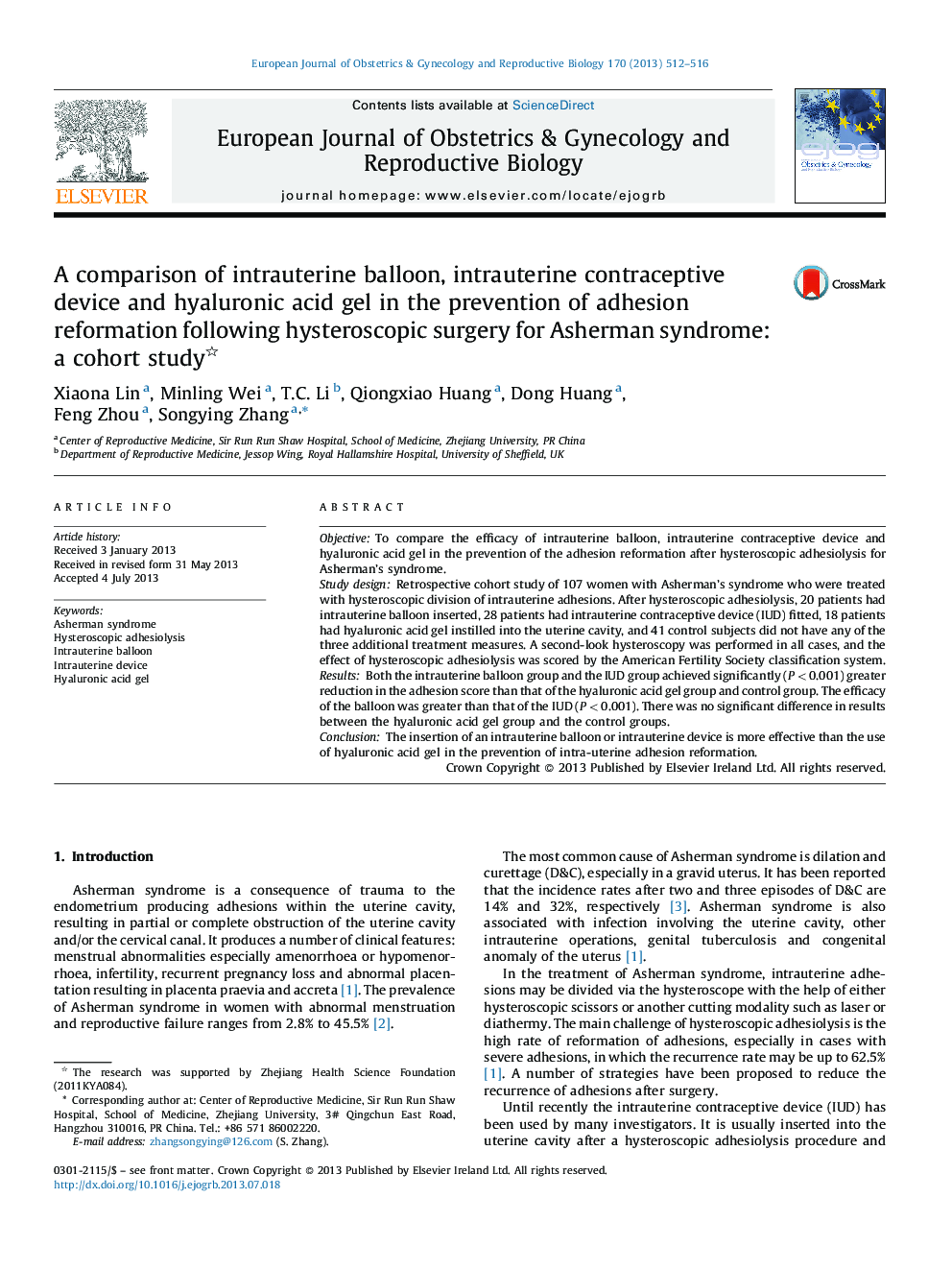| Article ID | Journal | Published Year | Pages | File Type |
|---|---|---|---|---|
| 6174130 | European Journal of Obstetrics & Gynecology and Reproductive Biology | 2013 | 5 Pages |
ObjectiveTo compare the efficacy of intrauterine balloon, intrauterine contraceptive device and hyaluronic acid gel in the prevention of the adhesion reformation after hysteroscopic adhesiolysis for Asherman's syndrome.Study designRetrospective cohort study of 107 women with Asherman's syndrome who were treated with hysteroscopic division of intrauterine adhesions. After hysteroscopic adhesiolysis, 20 patients had intrauterine balloon inserted, 28 patients had intrauterine contraceptive device (IUD) fitted, 18 patients had hyaluronic acid gel instilled into the uterine cavity, and 41 control subjects did not have any of the three additional treatment measures. A second-look hysteroscopy was performed in all cases, and the effect of hysteroscopic adhesiolysis was scored by the American Fertility Society classification system.ResultsBoth the intrauterine balloon group and the IUD group achieved significantly (PÂ <Â 0.001) greater reduction in the adhesion score than that of the hyaluronic acid gel group and control group. The efficacy of the balloon was greater than that of the IUD (PÂ <Â 0.001). There was no significant difference in results between the hyaluronic acid gel group and the control groups.ConclusionThe insertion of an intrauterine balloon or intrauterine device is more effective than the use of hyaluronic acid gel in the prevention of intra-uterine adhesion reformation.
